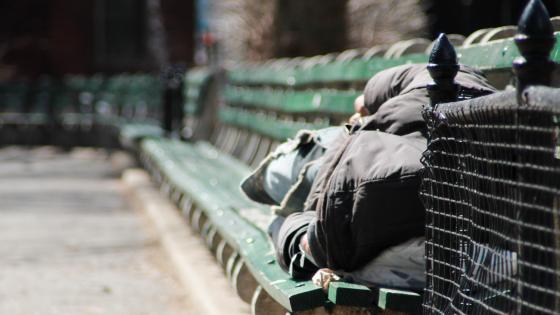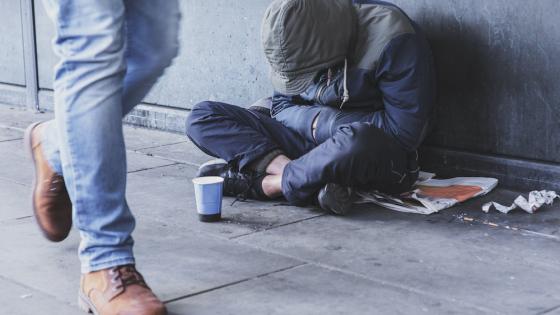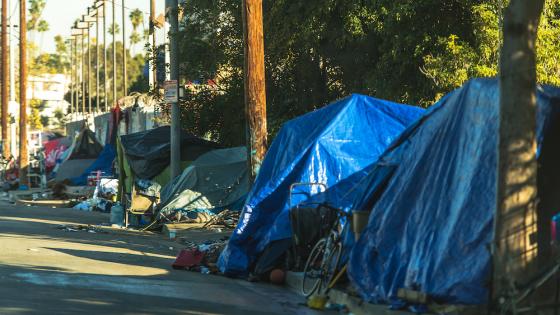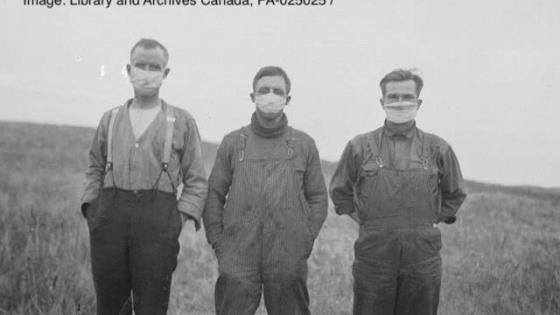People with lower incomes have worse health outcomes. This ‘socioeconomic gradient’ in health has been documented in rich countries (Reich et al. 2019) and in poor ones (Baldwin 2008), in recent years and in historical settings (Banerjee et al. 2004, Case and Deaton 2017). It arises whether disadvantage is defined in terms of income, consumption, education, or occupational status and across numerous indicators of physical health (Cutler et al. 2006, Conti et al. 2010, Tinoco et al. 2022). Yet, while recent work has started to illuminate the shape of this gradient in the US (Chetty et al. 2016) and its changes over time (Currie and Schwandt 2016), our present understanding falls short – as with so much of the broader literature on poverty – when we consider what is arguably the most disadvantaged segment of the population, people experiencing homelessness.
A recent rise in homelessness, coupled with the COVID-19 pandemic and epidemic of deaths from opioids and other substances, has added new urgency to efforts to understand the health disparities faced by this population. The Department of Housing and Urban Development (HUD) estimates that the number of people experiencing homelessness in the US rose by about one-fifth between 2017 and 2023. West Coast cities have witnessed an especially sharp and concentrated increase in unsheltered homelessness, leading some observers to liken the current situation to a public health and humanitarian crisis. Yet, despite extensive qualitative and small-scale research suggesting that poor health is both a cause and consequence of homelessness, data limitations have left significant gaps in our understanding of the relationship between health and homelessness, including fundamental questions about the magnitude of health disparities faced by this population.
Our study
These questions lie at the heart of a new paper that provides the first national calculation of mortality for the US homeless population (Meyer et al. 2023). We calculate mortality by linking 139,000 adults recorded as sheltered and unsheltered homeless in the 2010 Census to all-cause mortality data from the Social Security Administration (SSA) up to 2022. We also link random samples of the housed and housed poor from the Census and American Community Survey (ACS) to SSA mortality data to enable direct comparisons between homeless and housed individuals, overcoming a key challenge faced by prior work. While our study is not the first to calculate the mortality risk of homeless individuals, it is by far the largest and most representative study to date and the only study to contrast homeless and housed individuals using comparable sources.
Key findings
We find that people who have experienced homelessness face 3.5 times the mortality risk of people who are housed, accounting for differences in demographic characteristics and geography (Figure 1). This disparity far exceeds the mortality gap between Black and white housed individuals (relative hazard of 1.4) and between poor housed and all housed individuals (2.2). Looking at mortality risk over the life cycle reveals another striking finding: a 40-year-old homeless person faces similar mortality risk to a housed person nearly twenty years older (Figure 2). By 2022, about 16% of those who were homeless in 2010 had passed away, compared to just 6% of the housed poor sample and 4% of the overall housed sample.
Figure 1 Mortality hazard relative to housed group, ages 18-54, 2010-2022
Figure 2 Mortality hazard by age relative to hazard of those 30 years old and housed
We estimate that mortality in the homeless population rose by about one-third during the COVID-19 pandemic (Figure 3). This increase was similar in proportional terms for the housed population, but it affected a much larger share of homeless individuals because of their high baseline mortality risk. Because our data do not indicate cause of death, however, we are unable to say whether increased deaths were due to the virus itself or to other pandemic-era disruptions, such as increased difficulties in obtaining emergency medical services. Indeed, one small San Francisco-based study found that a surge in homeless deaths during the pandemic was due to increased deaths from acute drug toxicity and traumatic injury, not COVID-19 (Cawley et al. 2022).
Figure 3 Mortality hazard (probability of death in a six-month period)
Our findings also contribute to an improved understanding of the income-mortality gradient in the US. The mortality risk of people who have experienced homelessness is about 1.85 times that of the poor housed population, after accounting for demographic differences and geography. Even within the homeless population, people with lower incomes have higher mortality risk. The mortality gradient appears to persist even into the extreme lower tail of socioeconomic disadvantage in the US.
Mortality differences within the homeless population
That homeless individuals face substantially elevated mortality risk may not come as a surprise, but comparisons of mortality risk between sub-groups of the homeless population revealed less-expected patterns. We find, for example, that after controlling for gender and age, people recorded in the Census as sheltered and unsheltered homeless faced similar mortality risk, as seen in Figure 1. This finding highlights the health risks faced even by people residing in shelters, a group that attracts less attention in policy discussions than the more visible set of people sleeping in unsheltered situations.
We also find that white homeless individuals face about 40% higher mortality risk than Black homeless individuals. This pattern is striking because in the housed population, and even among the housed poor, Black individuals face higher mortality risk than white individuals. This reversal in mortality rates by race might hold clues about how the predominant pathways to homelessness differ across groups. For example, it may be the case that white individuals tend to become homeless due to personal difficulties – such as substance abuse and behavioural health issues – while Black individuals are more likely to become homeless due to economic hardship and a lack of resources in friend and family networks to buffer against loss of housing.
The relationship between homelessness and health
Another striking finding lies in the time pattern of mortality risk over the study’s 12-year follow-up period. Our sample consists of people who were literally homeless in early 2010, but we know from prior work that most spells of homelessness are short, meaning that most people in our sample were likely housed for much of our study period. Yet we do not find evidence that mortality risk is especially elevated in the first few years of our study, as we might expect if the experience of homelessness led directly to short-term mortality risks. In fact, the mortality risk of the Census homeless sample is about 3 to 4 times higher than the housed sample in every year through 2022, as seen in Figure 3.
In other words, elevated mortality risk appears to persist well after people exit literal homelessness, suggesting that the immediate hazards of homelessness are not the primary drivers of premature death in this population. Rather, it may be the case that poor health precedes – or causes – homelessness, or that the health hazards caused by homelessness produce long-term mortality risks. Indeed, both homelessness and elevated mortality risk are likely rooted in a complex interplay between socioeconomic disadvantage and health over the life course.
Conclusions
Establishing a firm foundation of understanding is a crucial step towards addressing any intractable social problem, and homelessness is no different. This paper adds to growing body of work (Meyer et al. 2021) using large, representative national datasets and quantitatively rigorous analysis to examine the persistent hardships and stark health disparities associated with homelessness with the goal of improving the health and wellbeing of an exceptionally disadvantaged and vulnerable segment of the US population.
References
Baldwin, R (2008), “Aging and death on a dollar a day,” VoxEU.org, 12 February.
Banerjee, A, A Deaton and E Duflo (2004), "Wealth, Health, and Health Services in Rural Rajasthan," American Economic Review 94 (2): 326-330.
Case, A and A Deaton (2017), “Mortality and morbidity in the 21st century,” Brookings Papers on Economic Activity.
Cawley, C, H K Kanzaria, B Zevin, K M Doran, M Kushel and M C Raven (2022), "Mortality among people experiencing homelessness in San Francisco during the COVID-19 pandemic," JAMA Network Open 5(3): e221870-e221870.
Chetty, R, M Stepner, S Abraham, S Lin, B Scuderi, N Turner, A Bergeron and D Cutler (2016), “The Association Between Income and Life Expectancy in the United States, 2001-2014,” JAMA 315 (16):1750–1766.
Conti, G, J Heckman and S Urzua (2010), "The Education-Health Gradient," American Economic Review 100 (2): 234-38.
Currie, J and H Schwandt (2016), "Mortality Inequality: The Good News from a County-Level Approach," Journal of Economic Perspectives 30 (2): 29-52.
Currie, J and H Schwandt (2016), “Falling inequality in mortality in the US,” VoxEU.org, 2 July.
Cutler, D, A Deaton and A Lleras-Muney (2006), "The Determinants of Mortality," Journal of Economic Perspectives 20 (3): 97-120.
Meyer, B, A Wyse, K Corinth (2021), “Introducing a new dataset to better understand homelessness in the US,” VoxEU.org, 25 July.
Meyer, B D, A Wyse and I Logani (2023), “Life and death at the margins of society: the mortality of the US homeless population,” NBER Working Paper No. w31843.
Reich, M, A Godøy, C Lowenstein, W H Dow (2019), "A way out from rock bottom: Economic policies can reduce deaths of despair", VoxEU.org, 7 July.
Tinoco, B, A Lleras-Muney, A Tarozzi, E Aurino (2022), “The rise and fall of socioeconomic status gradients in height around the world,” VoxEU.org, 17 August.









